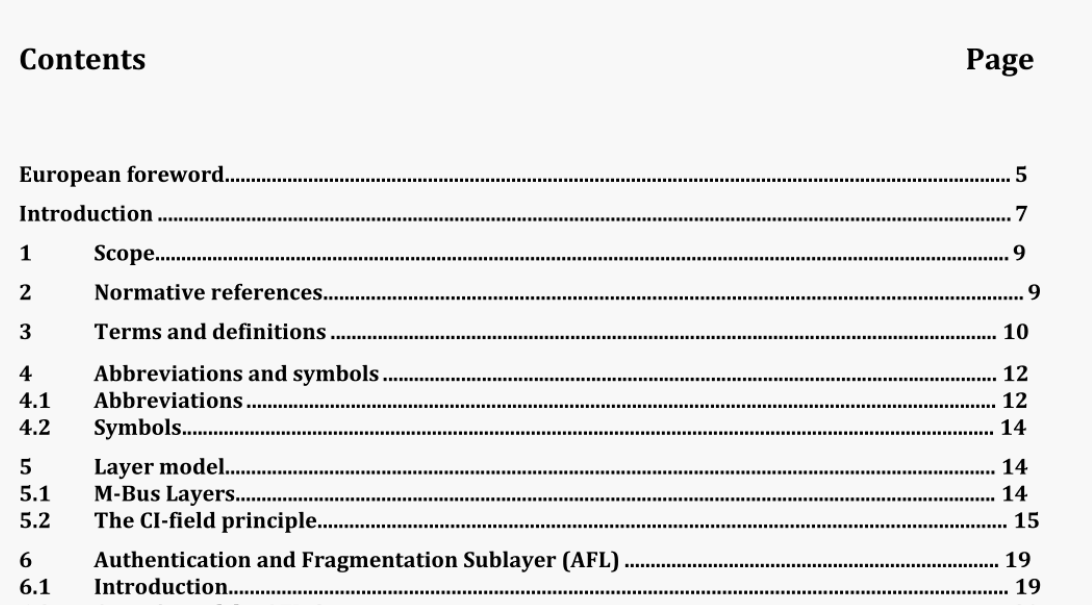BS EN 13757-7:2018 pdf download.Communication systems for meters Part 7: Transport and security services
1 Scope
This European Standard specifies Transport and Security Services for communication systems for meters.
This European Standard specifies secure communication capabilities by design and supports the building of a secure system architecture.
This European standard is applicable to the protection of consumer data to ensure privacy.
This draft European Standard is intended to be used with the lower layer specifications determined in EN 13757-2, EN 13757-3, EN 13757-4, EN 13757-5 and EN 13757-6.
2 Normative references
The following documents, in whole or in part, are normatively referenced in this document and are indispensable for its application. For dated references, only the edition cited applies. For undated references, the latest edition of the referenced document (including any amendments) applies.
EN 13757-1, Communication systems for meters – Part 1: Data exchange
EN 13757-2, Communication systems for meters – Part 2: Wired M-Bus communication
EN 13757-3:2018, Communication systems for meters一Part 3: Application protocols
EN 13757-4:2013, Communication systems for meters and remote reading of meters – Part 4: Wireless meter readout (Radio meter reading for operation in SRD bands)
EN 13757-5, Communication systems for meters . Part 5: Wireless M-Bus relaying
EN 62056-5-3:2014,Electricity metering data exchange – The DLMS/COSEM suite – Part 5-3:DLMS/COSEM application layer
5.2 The CI-field principle
All layers between the DLL and the APL are introduced by a CI-field (control information field). These CI-fields declares the structure of the following layers. The layers ELL and NWL do not provide a dedicated length information. Therefore the structure of these layers has to be derived from the CI-field. Refer to EN 13757-4 or EN 13757-5 for specification of the length of the corresponding layers and the start position of the next layer. The AFL has a variable structure. It declares the length of this layer by a dedicated length field. The Transport Layer and the Application Layer uses a shared CI-field. For that reason, a Transport Layer shall be present whenever the Application Layer is used in a message. The shortest Transport Layer (no header) consists of this CI-field only. The CI-field of the Transport Layer declares the used application protocol (like M-Bus Data, DLMS-Data or Alarm protocol), the origin of message (Command of Master or Slave- Response) and the fixed header structure of the TPL header. Behind this CI-field, no other CI-field follows. The length of the APL is given by the message length reduced by the length of the other existing layers.
BS EN 13757-7:2018 pdf download
